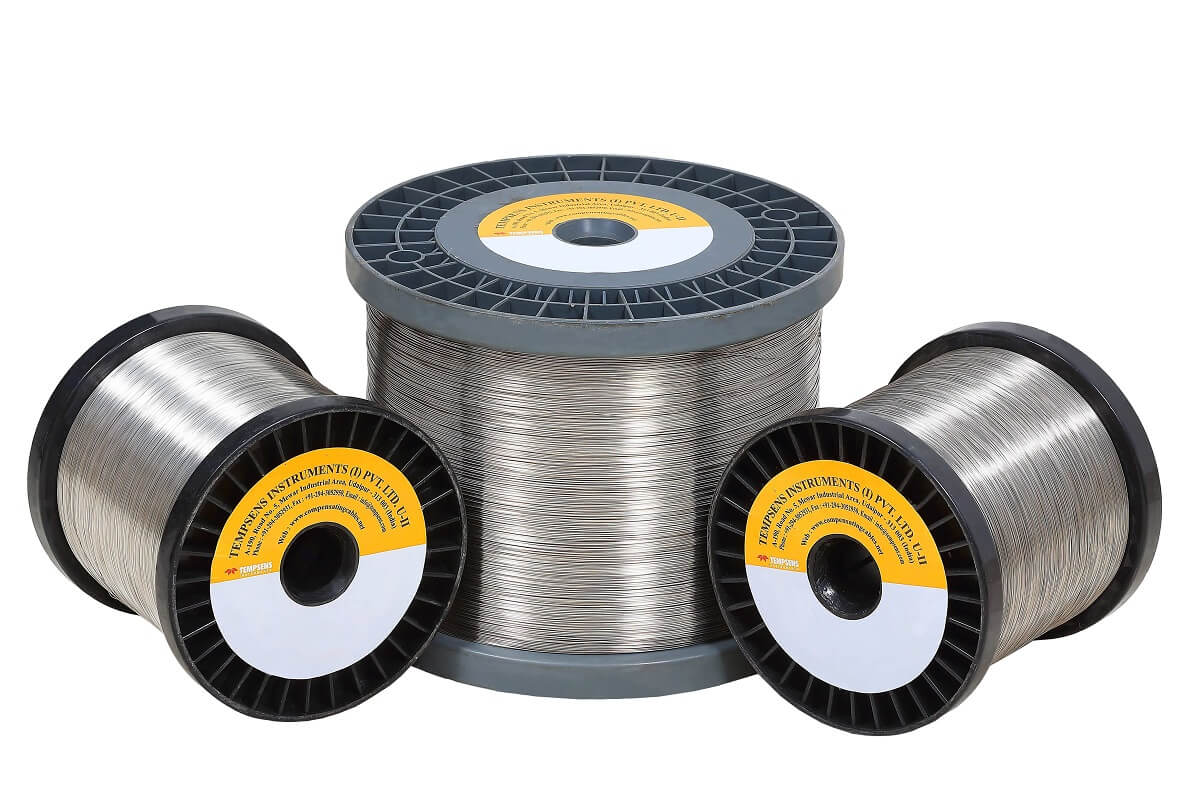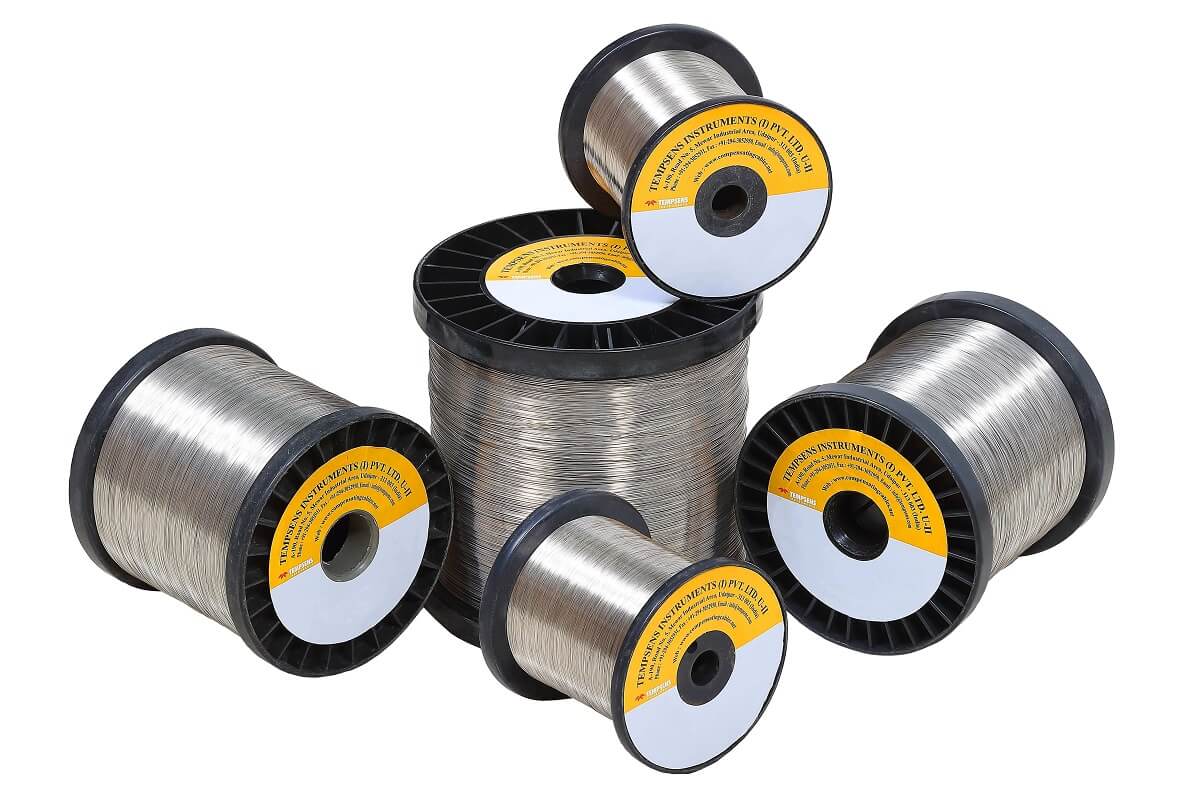- Home
- About
- Products
- Contact Temperature Sensors
- Cables & Wires
- Mineral Insulated Cables
- Nickel & Thermocouple Alloy
- Industrial Heaters
- Heating Cables and Mats
- Non Contact Temperature Sensors
- Industrial and R&D Furnaces
- Temperature Calibrators
-
Circulating Chiller
- Services
-
Special Products
- Thermal Profiling System
- Industries
- Resources
- Contact Us
- Shop
Unlocking the Potential of Nichrome Heating Wire: An Engineering Perspective

In the world of heating elements and resistance wires, few materials are as versatile and widely used as nichrome wire. Nichrome wire Engineered to exhibit precise electrical and thermal properties.
Understanding the Engineering Behind Nichrome Wire: Nichrome wire is meticulously engineered with a carefully balanced composition of nickel, chromium, and some percentage of iron. This alloy undergoes a controlled manufacturing process to achieve specific electrical resistance and heat-resistance properties essential for its intended applications.
At its core, nichrome wire epitomizes precision engineering and scientific prowess. Engineered with meticulous attention to detail, its composition is finely tuned to achieve a delicate balance of electrical resistance, thermal stability, and mechanical integrity. Through precise control of alloy composition, manufacturing processes, and heat treatment, engineers unlock a spectrum of properties that empower nichrome wire to excel in the most demanding of environments.

Properties of Nichrome Wire:
- High Electrical Resistance: Nichrome wire exhibits high resistance to the flow of electricity. This property allows it to generate heat efficiently when an electric current passes through it.
- Heat Resistance: One of the most significant properties of nichrome wire is its ability to withstand high temperatures without undergoing significant changes in its properties. This makes it suitable for applications where intense heat is required, such as heating elements in appliances and industrial furnaces.
- Corrosion Resistance: Nichrome wire is relatively resistant to corrosion, which contributes to its longevity and durability in various environments, including those with high humidity or chemical exposure.
- Ductility: Nichrome wire is ductile, meaning it can be easily bent, shaped, or coiled without breaking. This property allows for flexibility in its use and installation, making it suitable for various applications.
- Uniform Heating: Nichrome wire provides uniform heating over its length, ensuring consistent temperature distribution in applications such as heating elements and resistance heating.
- Stable Resistance: Nichrome wire maintains a stable resistance even at high temperatures, which is crucial for maintaining the desired level of heat output in heating elements and other applications.
- Low Thermal Expansion: Nichrome wire has a relatively low coefficient of thermal expansion, meaning it expands minimally when heated. This property helps maintain dimensional stability in heating elements and prevents warping or distortion.
- Longevity: Nichrome wire is durable and has a long service life, even under harsh operating conditions. Its resistance to oxidation and other forms of degradation contributes to its reliability and longevity in various applications.
- Non-Magnetic: Nichrome wire is non-magnetic, which makes it suitable for applications where magnetic interference must be minimized, such as in electronic devices or sensitive equipment.
- Available in Various Gauges: Nichrome wire is available in a range of gauges or thicknesses, allowing for customization based on specific heating requirements and power ratings.
These properties make nichrome wire a preferred choice for heating elements, resistive heating applications, and other high-temperature environments where reliability, durability, and uniform heating are essential.
Applications of Nichrome Wire:
- Heating Elements: Nichrome wire is commonly used as heating elements in various household appliances, including toasters, hair dryers, electric ovens, and space heaters. Its ability to generate heat efficiently and withstand high temperatures makes it ideal for these applications.
- Industrial Furnaces and Ovens: Nichrome wire is a key component in industrial furnaces, kilns, and ovens used for heat treatment, annealing, melting, and other thermal processing applications in industries such as metallurgy, ceramics, and glass manufacturing.
- Resistance Heating: Nichrome wire is utilized in resistance heating applications where controlled and uniform heat distribution is required. This includes industrial heaters, electric stoves, hot plates, soldering irons, and heat sealing equipment.
- Aerospace and Automotive Heating Systems: Nichrome wire finds applications in aerospace and automotive industries for heating elements in engine components, sensors, de-icing systems, and cabin heaters. Its reliability and ability to withstand high temperatures make it suitable for demanding environments.
- Heating Coils and Wire Wound Resistors: Nichrome wire is commonly used in the manufacture of heating coils for industrial and commercial equipment, as well as wire wound resistors for electrical circuits and electronic devices.
- Medical Devices: Nichrome wire is utilized in medical devices such as heating pads, thermal therapy equipment, and surgical instruments where precise and controlled heat is required for therapeutic or surgical procedures.
- Energy-efficient Appliances: Nichrome wire contributes to the development of energy-efficient heating appliances by providing rapid heating and temperature control, resulting in reduced energy consumption and enhanced performance in devices such as electric kettles, coffee makers, and irons.
- Thermal Spray Coatings: Nichrome wire is employed as a feedstock material in thermal spray processes such as flame spraying, arc spraying, and plasma spraying. In these processes, the nichrome wire is melted using a heat source, atomized, and propelled onto a substrate surface to form a protective or functional coating. These coatings provide corrosion resistance, wear resistance, thermal insulation, and other desirable properties to the substrate material.
Choosing The Right Nichrome Wire
Choosing the right Nichrome wire involves a systematic approach to ensure that the selected wire meets the specific requirements of your application.
Here are key considerations when selecting Nichrome wire:
- Define Application Requirement: Clearly state the heating requirements of your application. Consider factors such as desired temperature, heating time and specific performance criteria.
- Determine Operating Conditions: Determine operating conditions, including ambient temperature, environmental factors such as humidity and corrosive elements, and any mechanical stresses to which the wire may be Exposed.
- Understand Electrical Specifications: Obtain the electrical specifications for your application, such as voltage and power requirements. Calculate the resistance needed to achieve the desired heat.
- Select Wire Gauge: Select the appropriate wire gauge according to the required resistance and capacity. Thick wires (smaller gauge) have less resistance and can carry more current, while thinner wires (larger gauge) have higher resistance.
- Consider Temperature Coefficient: Estimate the temperature coefficient of resistance of nichrome wire. This factor is critical if your application requires precise temperature control because it affects the change in resistance with Temperature.
- Consider Life Span and Durability: Determine the duration of your application and opt for a nichrome wire that is robust enough to meet these conditions. Consider the frequency of replacement and maintenance.
- Evaluate Costs and Budget: Determine the duration of your application and select nichrome wire durable enough to meet these conditions. Consider the frequency of replacement and maintenance.

Safety Consideration
When used as a heating element, nichrome wire poses significant safety risks. Nichrome wire can attain high temperatures during operation, necessitating careful precautions. Adequate insulation is crucial to prevent accidental contact and reduce the risk of electric shocks. Regular inspections to identify signs of wear, damage, or corrosion are important for maintaining the wires structural integrity and ensuring long-term safety. Safety measures canbe used to minimize potential risks associated with nichrome wire applications, ensuring both operational efficiency and personnel safety. To maintain nichrome heating wire, it is crucial to keep it clean and free from debris or dust accumulation.It is also essential to avoid overheating the wire, as it can lead to damage and reduce its lifespan. Therefore, it is recommended to use a temperature controller to regulate the heat produced by the wire. When handling nichrome heating wire, it is crucial to use heat- resistant gloves and tools to avoid burns. Additionally, it is recommended to store the wire in a cool, dry place away from direct sunlight and moisture to prevent damage. Proper care and maintenance of nichrome heating wire can ensure its efficient and safe operation, reducing the risk of accidents and prolonging its life span.
Future Trends And Innovation
The advancement of technology can lead to innovations in nichrome heating wire. This is possible through the investigation of novel alloy composition, manufacturing processes, and applications, the alloy’s efficiency can be enhanced and its usefulness in temperature regulation can increase across different fields.
In this landscape, Tempsens emerges as a leading manufacturer of thermal and cable solutions with more than 45 years of experience in temperature measurement, focusing on both contact and non-contact temperature sensors. We take pride in manufacturing high-quality nichrome wire alloys in our state-of- the-art facilities. With a focus on precision engineering and stringent quality control measures, we ensure that our alloys meet the highest standards of performance and reliability. Our skilled team of engineers and technicians employs advanced manufacturing techniques to produce nichrome wire alloys that excel in diverse applications, from household appliances to industrial machinery. By leveraging our expertise and cutting-edge technology, we consistently deliver alloys that exceed customer expectations for durability, thermal stability, and electrical resistance. At our facilities, innovation meets excellence as we continue to push the boundaries of material science to create alloys that drive progress and innovation across industries.
For details visit at https://tempsens.com/catalog/nickel-thermocouple-alloy/nickel-conductor.html


